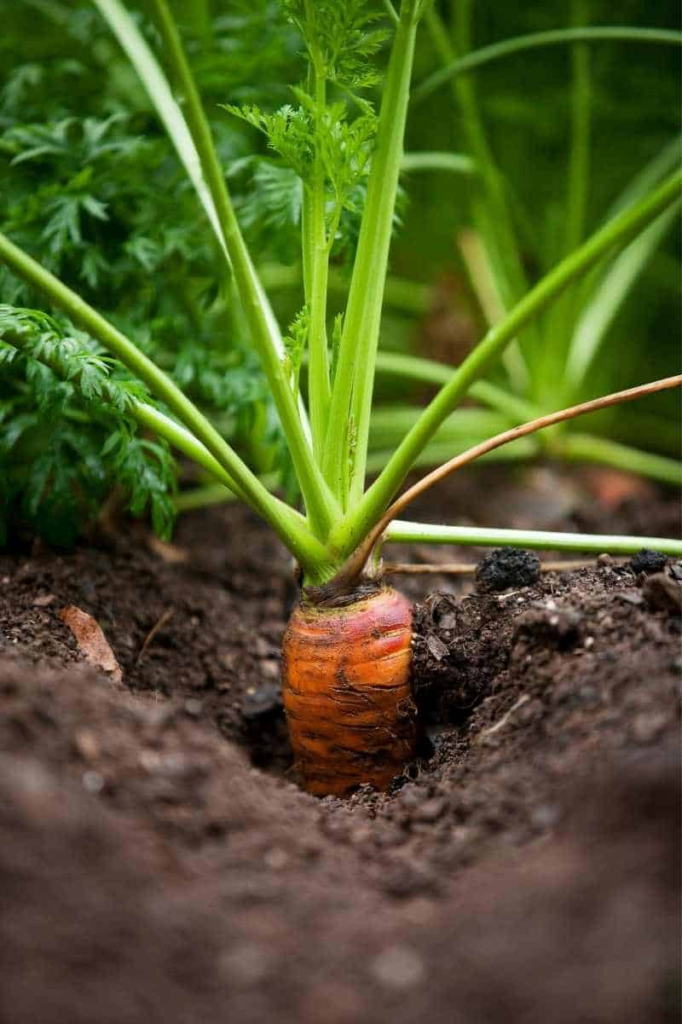Carrots are a staple in many vegetable gardens, and growing them from seed is easier than you might think, as long as you follow some key guidelines.
Where to Grow Carrots
Carrots thrive in full sunlight and well-drained, stone-free soil. They grow best in beds enriched with compost, although freshly manured soil can cause the roots to fork. To achieve the best results, plant carrots after a heavy-feeding vegetable like cabbage.
You have several options for where to grow carrots: directly in the ground, in raised beds, or even in containers on patios. Carrots come in many shapes and sizes, from small, stump-rooted varieties to longer, medium-sized carrots. Small carrots can be grown in pots or heavy soils, while longer types require lighter soil, raised beds, or deep containers.
Carrots also come in a variety of colors beyond the typical orange – you can try purple, yellow, white, or red carrots for a fun twist on the classic root vegetable.
When to Sow Carrots
The best time to sow carrots is from early spring to midsummer. Early varieties can be sown in greenhouse or hoop house beds, or in pots kept under cover. Outdoors, you can use row covers or cold frames to extend the growing season and protect the crops from the elements.
For a continuous harvest, sow carrots every two to three weeks, with the last sowing made in midsummer. This ensures you have fresh carrots well into the winter, and those left in the ground will last until spring.

How to Sow Carrots
Carrots are best sown directly in the soil, as they do not transplant well. Start by clearing the soil of stones, as these can cause the roots to fork. Then, rake the soil to a fine texture, and mark out rows. Sow the tiny seeds about a quarter inch (1 cm) deep, spacing rows 6 inches (15 cm) apart. To avoid crowding, mix the tiny seeds with dry sand, which will help distribute them evenly along the row.
For container-grown carrots, fill pots with potting soil, firm it down lightly, and scatter the seeds thinly on top. Cover the seeds with a thin layer of soil, water gently, and label the container with the variety and sowing date.

Preventing Carrot Fly
Carrot flies are a common pest, especially in warmer months. These flies lay eggs near the base of the plant, and their larvae (maggots) can damage the roots. To protect your carrots, cover them with row covers or garden fleece right after sowing, securing the edges to keep the flies out.
If you’re growing carrots in containers, simply lift the pots off the ground to prevent carrot flies from reaching them. Alternatively, companion planting with crops like leeks can help deter carrot flies, as the scent of leeks confuses the insects.
Caring for Carrots
Carrot seedlings may need thinning if they’re too crowded. You can either pull excess plants carefully or use scissors to snip off the tops, which avoids disturbing the neighboring roots. It’s best to thin on still days, as the smell of carrots can attract carrot flies.
Carrots tend to bolt (go to seed) if stressed, especially in dry conditions. Keep the soil consistently moist and remove weeds regularly to reduce competition for nutrients and water.
Although carrots don’t require much fertilization, mulching with compost or leaf mold can prevent the tops from turning green from excessive sunlight.

Harvesting Carrots
Carrots are ready to harvest once they’ve reached the desired size. You can usually tell by the size of the root showing above the soil. Gently dig around the root to check its size, and if it’s ready, pull it out. For larger carrots, you may need a fork to loosen the soil. Harvest alternate carrots so the remaining ones can continue to grow.
In milder climates, carrots can be left in the ground and harvested as needed throughout winter. Alternatively, you can harvest and store them in damp sand in a cool, dark place for later use.
Conclusion
Fresh, garden-grown carrots are delicious, nutritious, and surprisingly easy to grow. By following these simple steps, you can enjoy a bountiful harvest of this vibrant vegetable. Whether you’re a first-time gardener or have had challenges in the past, carrots are worth a try. Happy gardening!
